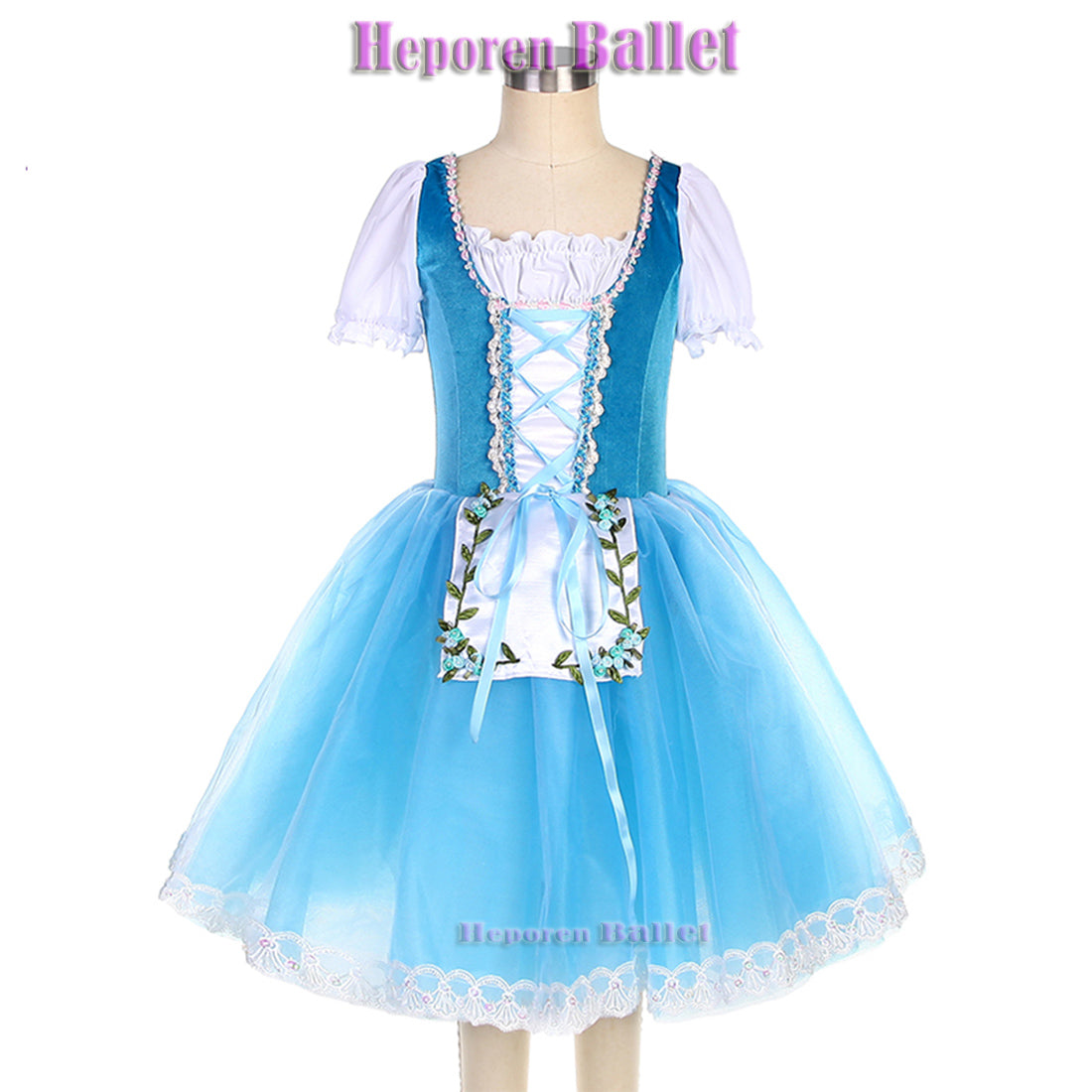
“Giselle” romantic ballet dress
Share
Introduction to the “Giselle” Romantic Ballet Dress
The “Giselle” romantic ballet dress is a quintessential element of the ballet’s iconic aesthetic, reflecting the style and themes of the Romantic era in ballet. “Giselle,” a ballet choreographed by Jean Coralli and Jules Perrot with music by Adolphe Adam, premiered in 1841 and is renowned for its portrayal of ethereal and tragic themes of love and betrayal.
Key Features of the Giselle Romantic Ballet Dress:
-
Design and Structure:
- The Giselle romantic ballet dress typically features a knee-length or calf-length skirt made from layers of soft tulle or chiffon. This style of skirt is known as the “romantic tutu” and is a hallmark of Romantic ballet costumes. It creates a light, floating effect that enhances the ballet’s otherworldly atmosphere.
- The bodice of the dress is usually fitted and adorned with delicate details such as lace, embroidery, or beading, often in pastel or soft colors like white, pink, or light blue.
-
Material and Fabric:
- The primary materials used are lightweight and flowing fabrics like tulle, chiffon, and satin. These materials allow for ease of movement and contribute to the ethereal quality of the costume.
- The fabrics are often layered to create volume in the skirt, adding to the ballet’s ghostly and dreamlike aesthetic.
-
Color and Embellishments:
- The color palette for the Giselle dress is typically soft and muted, reflecting the romantic and delicate nature of the character. White is a prominent color, symbolizing Giselle’s purity and innocence.
- Embellishments are usually subtle but can include delicate embroidery, sequins, and floral appliqués that add a touch of elegance without overwhelming the simplicity of the design.
-
Headpieces and Accessories:
- Giselle’s headpiece is often a simple yet elegant tiara or floral crown that complements the soft, ethereal look of the dress. It may include flowers, small crystals, or delicate ribbons.
- Accessories are minimal, focusing on enhancing the overall light and airy quality of the costume while allowing the dancer’s movements to take center stage.
-
Historical Context:
- The romantic ballet dress became popular during the Romantic era of ballet, which emphasized the depiction of supernatural and otherworldly themes. The design of Giselle’s costume reflects the era’s fascination with the ethereal and the mystical, contributing to the ballet’s enchanting and tragic narrative.
Conclusion: The Giselle romantic ballet dress is a beautiful representation of the Romantic ballet period, combining elegance and simplicity to enhance the ballet’s dreamlike and tragic themes. Its design plays a crucial role in creating the ballet’s hauntingly beautiful atmosphere and remains a classic symbol of Romantic ballet aesthetics.
